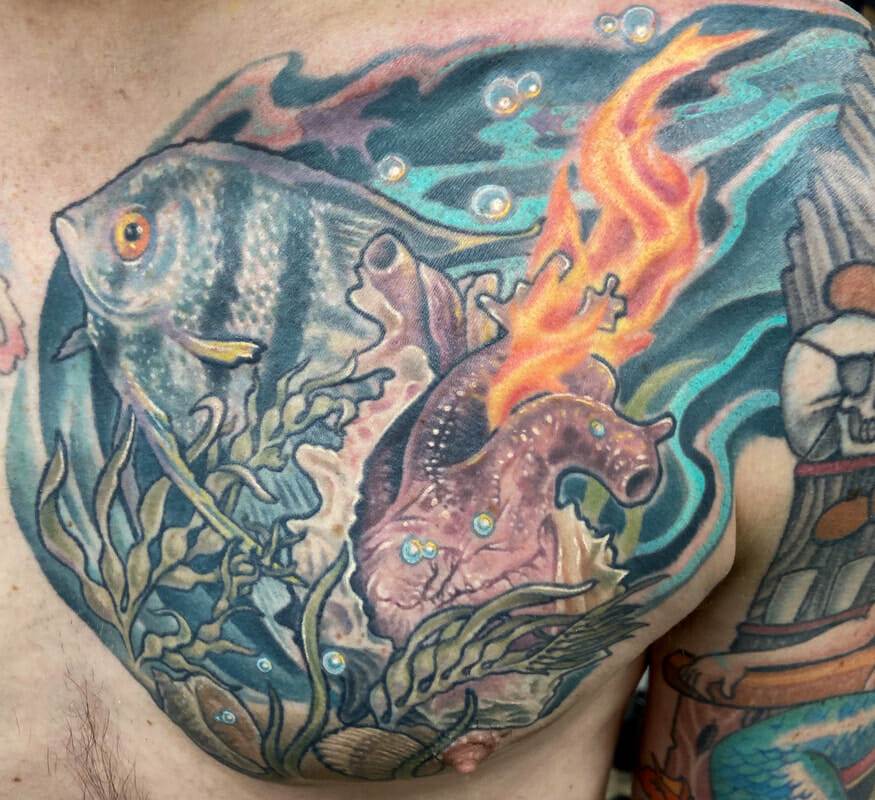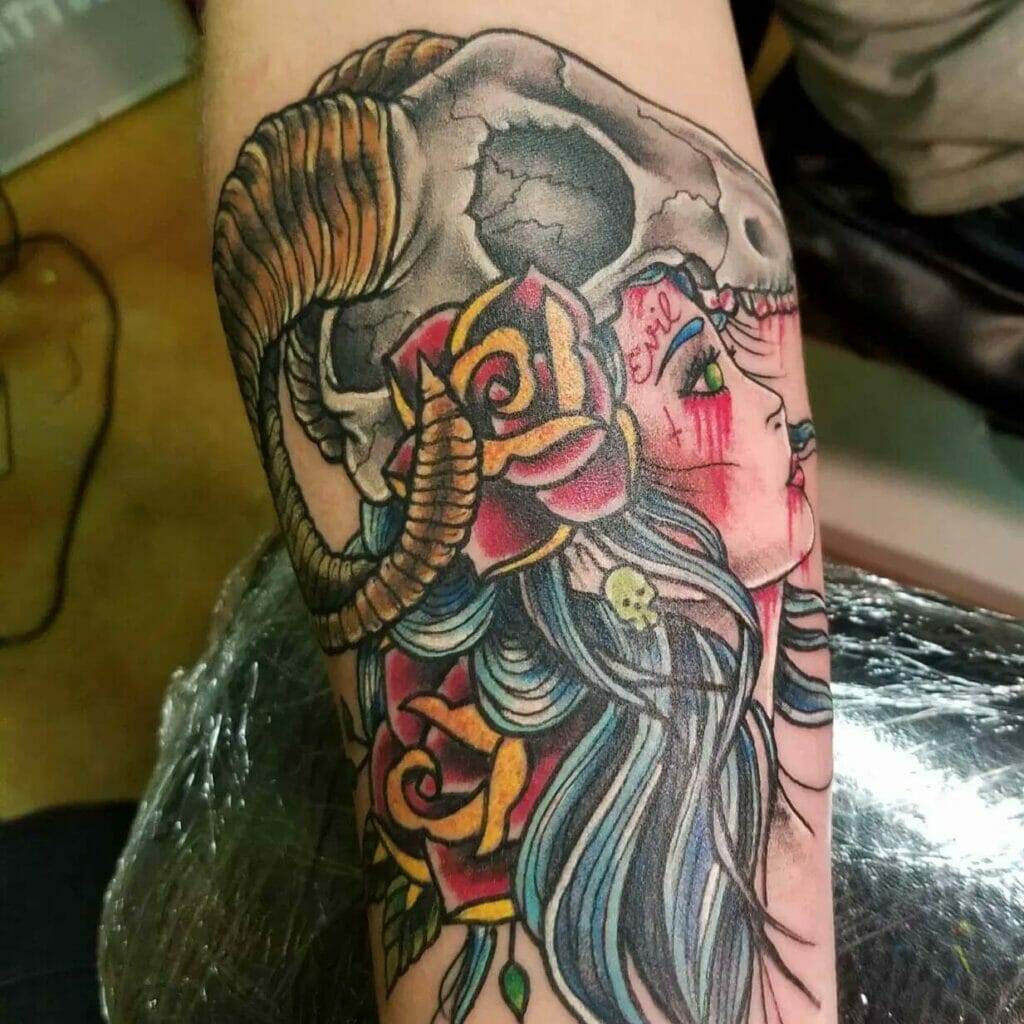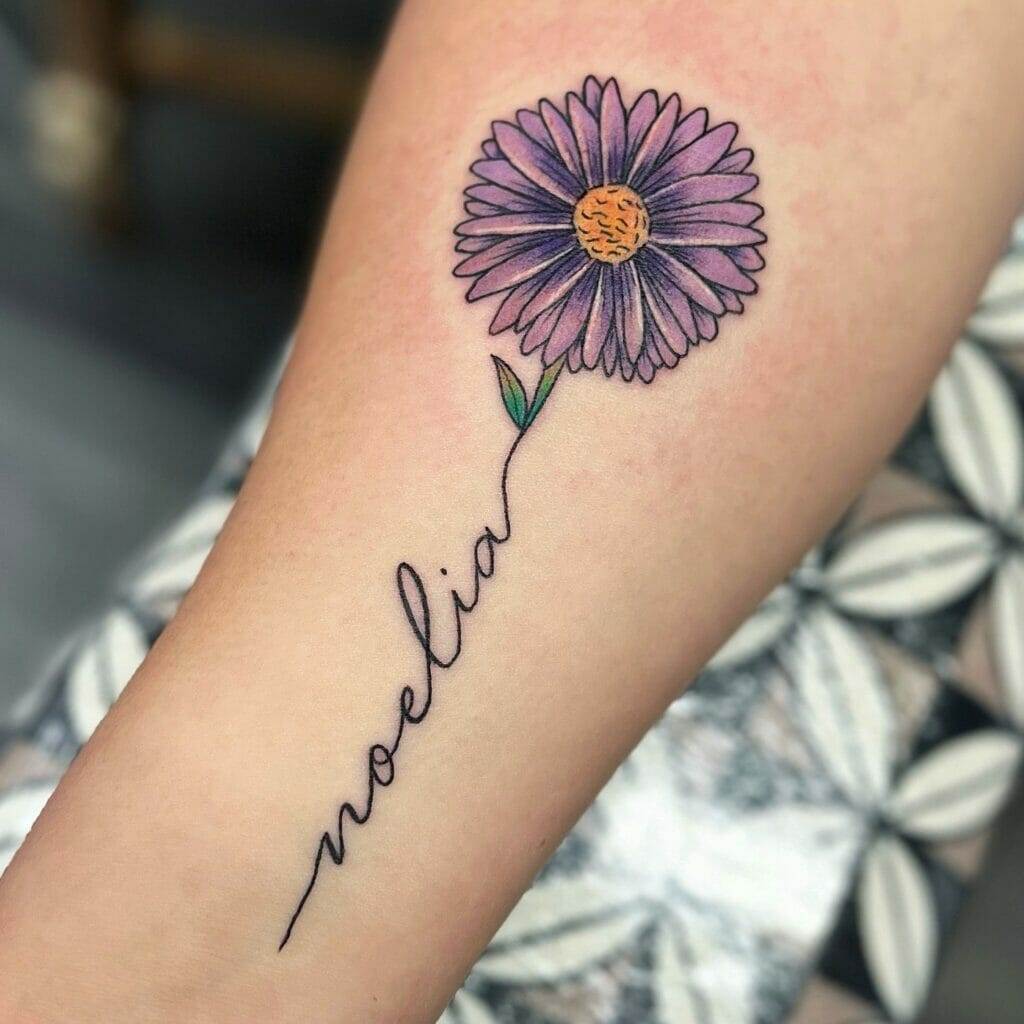Tattoos have been a part of human culture for thousands of years, with a rich history and cultural significance that varies across different societies. Understanding the history and cultural significance of tattoos is important in order to appreciate the art form and its role in society. Tattoos have evolved from ancient practices to modern styles, and they hold different meanings and purposes in various cultures. This article will explore the history of tattooing across different cultures, the evolution of tattoo art, the cultural significance of tattoos, their role in religious and spiritual practices, the social and political implications of tattooing, the psychological and emotional impact of getting a tattoo, the rise of tattoo culture in mainstream media, the diversity of tattoo designs and their meanings, the taboo and stigma surrounding tattoos in some cultures, the technological advancements in the tattoo industry, and the future of tattooing in modern society.
The History of Tattooing Across Different Cultures
Tattooing has a long history that dates back thousands of years. The exact origins of tattooing are difficult to determine, as evidence of tattooed bodies has been found in various ancient civilizations. The oldest known tattooed human remains were discovered in 1991 in the Ötzi the Iceman, a mummy from around 3300 BCE. His body was covered in over 50 tattoos, which were believed to have been used for therapeutic purposes.
Tattooing practices varied across different ancient civilizations. In ancient Egypt, tattoos were primarily used for therapeutic purposes and were often found on female mummies. In ancient Greece and Rome, tattoos were associated with slaves and criminals. In Polynesia, tattoos were deeply ingrained in the culture and served as a form of identity, status, and protection.
Indigenous cultures around the world also had their own unique tattooing practices. In Native American tribes, tattoos were used for spiritual and ceremonial purposes. In Maori culture, tattoos known as moko were used to signify social status and tribal affiliations. In the Philippines, tattoos called batok were used to mark warriors and headhunters.
The Evolution of Tattoo Art from Traditional to Modern Styles
Tattoo art has evolved over time, with different styles emerging throughout history. Traditional tattoo styles are characterized by bold lines, limited color palettes, and iconic imagery. These styles include American Traditional, which features bold, black outlines and a limited color palette; Japanese Traditional, which incorporates traditional Japanese motifs such as dragons and koi fish; and Tribal, which consists of abstract designs inspired by indigenous cultures.
In recent years, modern tattoo styles have gained popularity. These styles often incorporate more intricate details, vibrant colors, and realistic imagery. Realism is a popular style that aims to create tattoos that look like photographs or paintings. Watercolor tattoos use vibrant colors and brushstroke techniques to create a painterly effect. Geometric tattoos feature precise lines and shapes to create intricate patterns.
Today, there is a wide range of popular tattoo styles to choose from. Some people opt for minimalist tattoos with simple designs and clean lines. Others prefer neo-traditional tattoos, which combine traditional elements with modern techniques. Blackwork tattoos use only black ink to create bold, graphic designs. Dotwork tattoos consist of intricate patterns made up of tiny dots.
The Cultural Significance of Tattoos in Different Societies
Tattoos hold different meanings and cultural significance in various societies. In some cultures, tattoos are seen as a form of identity, representing one’s affiliation with a particular group or community. For example, in Polynesian cultures, tattoos serve as a way to identify one’s tribe and social status. In Native American tribes, tattoos are used to symbolize one’s connection to their heritage and spiritual beliefs.
In other societies, tattoos are seen as a symbol of status or achievement. In ancient Egypt, tattoos were often found on high-ranking individuals, such as priests and pharaohs. In Japan, tattoos were historically associated with the criminal underworld, but they have since become more accepted and are now seen as a symbol of strength and resilience.
Tattoos are also a form of expression, allowing individuals to showcase their personal beliefs, values, and experiences. People often choose tattoos that have personal significance to them, such as symbols that represent their family, hobbies, or life experiences. Tattoos can also be a way to express one’s creativity and individuality.
The Role of Tattoos in Religious and Spiritual Practices

Tattoos have played a significant role in religious and spiritual practices throughout history. In many cultures, tattoos are used as a way to connect with the divine or to symbolize one’s devotion to a particular religious belief.
In Hinduism, tattoos known as yantras are used to invoke spiritual energy and protection. These intricate geometric designs are believed to have mystical powers and are often placed on specific parts of the body for their symbolic significance.
In Buddhism, tattoos are used as a form of spiritual protection and guidance. Many Buddhists choose to get tattoos of sacred symbols such as the lotus flower or the Om symbol. These tattoos serve as a reminder of their spiritual path and help them stay connected to their beliefs.
In Christianity, tattoos are less common but still hold religious significance for some individuals. Some Christians choose to get tattoos of religious symbols such as crosses or verses from the Bible as a way to express their faith and devotion.
The Social and Political Implications of Tattooing
Tattoos have long been associated with certain social groups or subcultures. In the past, tattoos were often seen as a mark of rebellion or nonconformity. They were commonly associated with bikers, sailors, and criminals.
However, attitudes towards tattoos have changed over time, and they have become more accepted in mainstream society. Today, tattoos are seen as a form of self-expression and personal style. Many people choose to get tattoos as a way to commemorate important life events, express their individuality, or simply because they find them aesthetically pleasing.
Despite the growing acceptance of tattoos, there is still some discrimination and stigma associated with them. In some workplaces, visible tattoos may be seen as unprofessional or inappropriate. Some individuals may also face judgment or prejudice based on their tattoos, especially if they have tattoos that are associated with certain subcultures or have negative connotations.
Tattoos have also had political implications throughout history. In some societies, tattoos have been used as a form of protest or resistance against oppressive regimes. For example, during World War II, Jewish prisoners in concentration camps were forcibly tattooed with identification numbers as a means of dehumanization. Today, some individuals choose to get tattoos as a way to express their political beliefs or support for certain causes.
The Psychological and Emotional Impact of Getting a Tattoo
People get tattoos for a variety of reasons, and the decision to get a tattoo can have psychological and emotional effects. Some individuals choose to get tattoos as a form of self-expression or to mark important life events. For these individuals, getting a tattoo can be a positive and empowering experience.
Getting a tattoo can also have psychological benefits. For some people, getting a tattoo can be a way to reclaim their body after experiencing trauma or illness. It can serve as a form of healing and empowerment.
However, getting a tattoo is not always a positive experience for everyone. Some individuals may experience tattoo regret or dissatisfaction with their tattoo. This can be due to factors such as changes in personal taste, the quality of the tattoo, or negative reactions from others.
Tattoo regret can have psychological and emotional consequences. It can lead to feelings of self-consciousness, regret, or even depression. In some cases, individuals may choose to undergo tattoo removal procedures to remove or alter their tattoos.
The Rise of Tattoo Culture in Mainstream Media and Popularity
Tattoos have become increasingly popular in mainstream media and culture. They are often seen on celebrities, athletes, and musicians, which has helped to normalize and popularize tattoos.
Many celebrities have embraced tattoos as a form of self-expression and personal style. Some celebrities have even become known for their extensive tattoo collections, such as Angelina Jolie, David Beckham, and Rihanna. Their tattoos have inspired many people to get inked and have helped to shape the current trends in tattoo art.
Tattoo conventions and events have also contributed to the rise of tattoo culture. These events bring together tattoo artists, enthusiasts, and collectors from around the world. They provide an opportunity for people to showcase their tattoos, get new tattoos, and learn about the latest trends in tattoo art.
The Diversity of Tattoo Designs and Their Meanings
Tattoos come in a wide range of designs, each with its own unique meaning and symbolism. Some popular tattoo designs include animals, flowers, symbols, quotes, and portraits.
Animals are a common choice for tattoos because they often represent certain qualities or characteristics. For example, a lion tattoo may symbolize strength and courage, while a butterfly tattoo may symbolize transformation and freedom.
Flowers are another popular choice for tattoos because they often carry symbolic meanings. For example, a rose tattoo may symbolize love and beauty, while a lotus flower tattoo may symbolize purity and enlightenment.
Symbols are often used in tattoos to represent certain beliefs or values. For example, a yin yang symbol may represent balance and harmony, while a Celtic knot may represent eternity and interconnectedness.
Quotes or words are often used in tattoos to convey a specific message or sentiment. Some people choose to get tattoos of meaningful quotes or words that hold personal significance to them.
Portraits are a more complex type of tattoo design that requires a high level of skill and expertise. Portraits can be of loved ones, historical figures, or fictional characters. They are often used to honor someone or to commemorate a special memory.
The Taboo and Stigma Surrounding Tattoos in Some Cultures
While tattoos have become more accepted in many societies, there are still some cultures where they are considered taboo or stigmatized. In some cultures, tattoos are associated with criminality, rebellion, or deviance. They may be seen as a sign of disrespect or a violation of cultural norms.
In Japan, for example, tattoos are still associated with the criminal underworld and are often associated with the yakuza, the Japanese mafia. Many public places such as hot springs, swimming pools, and gyms have strict policies against allowing people with visible tattoos to enter.
In some Middle Eastern countries, tattoos are seen as a violation of Islamic teachings and are considered haram (forbidden). People with visible tattoos may face discrimination or judgment from others.
In certain indigenous cultures, tattoos may be seen as inappropriate or disrespectful if they are not done in accordance with traditional practices. For example, in Maori culture, it is considered disrespectful for non-Maori individuals to get traditional Maori tattoos without proper understanding and permission.
The Technological Advancements in the Tattoo Industry
The tattoo industry has seen significant technological advancements in recent years. These advancements have improved the safety, precision, and efficiency of the tattooing process.
One major advancement is the development of tattoo machines. Traditional tattooing was done by hand using a manual needle and ink. Today, electric tattoo machines are used, which allow for faster and more precise tattooing. These machines use a needle that moves up and down rapidly to deposit ink into the skin.
Another advancement is the improvement of tattoo ink. In the past, tattoo ink was made from natural materials such as charcoal or plant dyes. Today, tattoo ink is made from synthetic pigments that are more vibrant and long-lasting.
The development of sterilization techniques and hygiene practices has also improved the safety of getting a tattoo. Tattoo artists now use disposable needles and tubes to prevent the spread of bloodborne pathogens. They also follow strict cleaning and sterilization protocols to ensure a safe and sanitary environment.

The Future of Tattooing and Its Place in Modern Society
The future of tattooing is likely to continue evolving as new trends, technologies, and cultural shifts emerge. As tattoos become more accepted in mainstream society, it is likely that their popularity will continue to grow.
Advancements in technology may lead to new techniques and styles in tattoo art. For example, 3D tattoos that create the illusion of depth and dimension may become more popular. Bioluminescent tattoos that glow in the dark or change color could also become a possibility.
Changing attitudes towards tattoos may also impact their place in modern society. As tattoos become more accepted, workplace policies may become more lenient towards visible tattoos. This could lead to more people getting tattoos and expressing themselves through body art.
However, it is important to note that cultural attitudes towards tattoos vary greatly around the world. In some cultures, tattoos may always be seen as taboo or stigmatized. It is important to respect and understand these cultural differences when discussing or engaging with tattoo culture.
Understanding the history and cultural significance of tattoos is important in order to appreciate the art form and its role in society. Tattoos have a long history that dates back thousands of years, with different practices and styles emerging across different cultures. Tattoos hold different meanings and purposes in various societies, serving as a form of identity, status, and expression.
Tattoos also play a significant role in religious and spiritual practices, serving as a way to connect with the divine or symbolize one’s devotion. The social and political implications of tattooing have evolved over time, with tattoos becoming more accepted in mainstream society but still facing some discrimination and stigma.
Getting a tattoo can have psychological and emotional effects, with some individuals experiencing tattoo regret or dissatisfaction. However, tattoos have become increasingly popular in mainstream media and culture, with celebrities and events contributing to the rise of tattoo culture.
Tattoos come in a wide range of designs, each with its own unique meaning and symbolism. While tattoos have become more accepted in many societies, there are still some cultures where they are considered taboo or stigmatized.
The tattoo industry has seen significant technological advancements, improving the safety, precision, and efficiency of the tattooing process. The future of tattooing is likely to continue evolving as new trends, technologies, and cultural shifts emerge.
In conclusion, understanding tattoo culture and history is important in order to appreciate the art form and its significance in society. Tattoos have a rich history and cultural significance that varies across different cultures. They hold different meanings and purposes, serving as a form of identity, status, expression, and spirituality. As tattoos become more accepted in mainstream society, it is important to respect and understand the cultural differences surrounding tattoos. The future of tattooing is likely to continue evolving as new trends and technologies emerge, but it is important to remember the importance of understanding and appreciating the history and cultural significance of tattoos.



